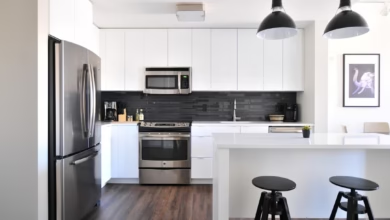Mastering Your Finances: Essential Strategies for Budgeting, Debt Management, and Future Investments

In today's fast-paced financial landscape, effectively managing personal finances is more crucial than ever. With economic uncertainties and rising living costs, establishing a solid financial foundation can empower individuals to navigate life's challenges with confidence and security. This article serves as a comprehensive guide, offering actionable budgeting tips and strategies designed to strengthen your financial health. We will explore essential topics such as building an emergency fund to safeguard against unexpected expenses, mastering debt management to improve credit scores, and the significance of retirement planning for long-term security. Additionally, we will delve into the importance of investing in yourself through education and skill-building, uncover ways to save on taxes through smart financial planning, and highlight the role of insurance in protecting your financial future. Finally, we will discuss how to set and achieve long-term financial goals that align with your aspirations. Whether you are just starting your financial journey or looking to refine your existing strategies, this article will equip you with the knowledge and tools necessary for a prosperous financial future.
- 1. Building a Strong Financial Foundation: Budgeting and Emergency Funds
- 2. Mastering Debt Management: Strategies for Repayment and Credit Improvement
- 3. Investing in Your Future: From Retirement Planning to Personal Development
1. Building a Strong Financial Foundation: Budgeting and Emergency Funds
A strong financial foundation begins with effective budgeting and the establishment of an emergency fund. Budgeting serves as a roadmap for managing your income and expenses, allowing you to identify areas where you can save and allocate funds toward your financial goals. Start by tracking your spending for a month to understand your habits, then categorize your expenses into fixed (like rent and utilities) and variable (like groceries and entertainment). This clarity will help you create a realistic budget that reflects your priorities.
Once you have a budget in place, it's crucial to build an emergency fund. This fund acts as a financial safety net, covering unexpected expenses such as medical emergencies, car repairs, or job loss. A common recommendation is to save three to six months' worth of living expenses in a separate, easily accessible account. To achieve this, consider setting up automatic transfers from your checking to your savings account each month, treating these savings like a non-negotiable expense. Start small if necessary, and gradually increase your contributions as your budget allows.
Together, budgeting and an emergency fund not only enhance your financial security but also empower you to make informed decisions about spending and saving. By laying this groundwork, you can navigate financial challenges with greater confidence and work toward achieving your long-term financial goals.
2. Mastering Debt Management: Strategies for Repayment and Credit Improvement
Mastering debt management is essential for achieving financial stability and improving your credit score. To effectively manage and repay debt, consider implementing the following strategies:
First, create a comprehensive list of all your debts, including the creditor's name, total amount owed, interest rate, and minimum monthly payment. This will give you a clear picture of your financial obligations and help you prioritize repayment.
One effective method for repaying debt is the snowball approach, where you focus on paying off the smallest debts first while making minimum payments on larger ones. This strategy can provide quick wins that boost your motivation and confidence. Alternatively, the avalanche method prioritizes debts with the highest interest rates, which can save you more money in the long run.
To further enhance your repayment strategy, consider consolidating your debts. This involves combining multiple debts into a single loan with a lower interest rate, which can simplify your monthly payments and reduce overall interest costs. Look into balance transfer credit cards or personal loans as potential options for consolidation.
Regularly reviewing your budget is also crucial. Identify areas where you can cut expenses and redirect those funds toward debt repayment. Consistency in sticking to a budget will not only help you pay down debt faster but also prevent you from accumulating more.
Improving your credit score is an important aspect of debt management. Make timely payments on all your debts, as payment history is a significant factor in your credit score. If you're struggling to keep up, consider negotiating with creditors for lower interest rates or more manageable payment plans.
Lastly, avoid taking on new debt while you’re working on repayment. This can be tempting, but it can derail your progress and negatively impact your credit score. Instead, focus on building healthy financial habits that prioritize saving and responsible spending.
By mastering these debt management strategies, you can create a solid foundation for financial health, improve your credit score, and ultimately work towards achieving your long-term financial goals.
3. Investing in Your Future: From Retirement Planning to Personal Development
Investing in your future encompasses both financial security through retirement planning and personal development aimed at enhancing your skills and knowledge. As you navigate your financial journey, it is essential to recognize that these two aspects are interrelated and can significantly impact your long-term success.
Retirement planning is a critical component of financial security. Start by determining your retirement goals, including the lifestyle you envision and when you hope to retire. A common guideline is to aim for a retirement income that is 70-80% of your pre-retirement income. Once you have a target in mind, explore retirement accounts such as 401(k)s or IRAs, which offer tax advantages and can help grow your savings over time. Regular contributions, even in small amounts, can compound significantly due to the power of interest over decades. It's also wise to reassess your investment strategy periodically to ensure it aligns with your risk tolerance and changing goals.
In parallel, investing in personal development is equally vital. Enhancing your skills through education, training, or certifications can open doors to career advancement and increased earning potential. Consider attending workshops, enrolling in online courses, or joining professional organizations relevant to your field. Networking with peers and industry leaders can also provide valuable insights and opportunities for growth.
By combining both retirement planning and personal development, you not only secure your financial future but also empower yourself to navigate challenges and seize opportunities that arise. This holistic approach ensures that you are not only prepared for retirement but also continuously adapting to an ever-changing job market, ultimately leading to greater financial resilience and personal fulfillment.
In conclusion, effectively managing personal finances is a multifaceted journey that begins with a strong foundation built on budgeting and the establishment of an emergency fund. By mastering debt management strategies, individuals can improve their credit scores and pave the way for future financial opportunities. Additionally, investing in one's future through retirement planning and personal development ensures long-term stability and growth. Smart financial planning, including tax-saving strategies and the appropriate use of insurance, further protects your financial well-being. Ultimately, setting and achieving long-term financial goals not only enhances your financial security but also fosters a sense of accomplishment and peace of mind. By implementing these budgeting tips and financial strategies, you can take control of your finances, leading to a more secure and prosperous future.





